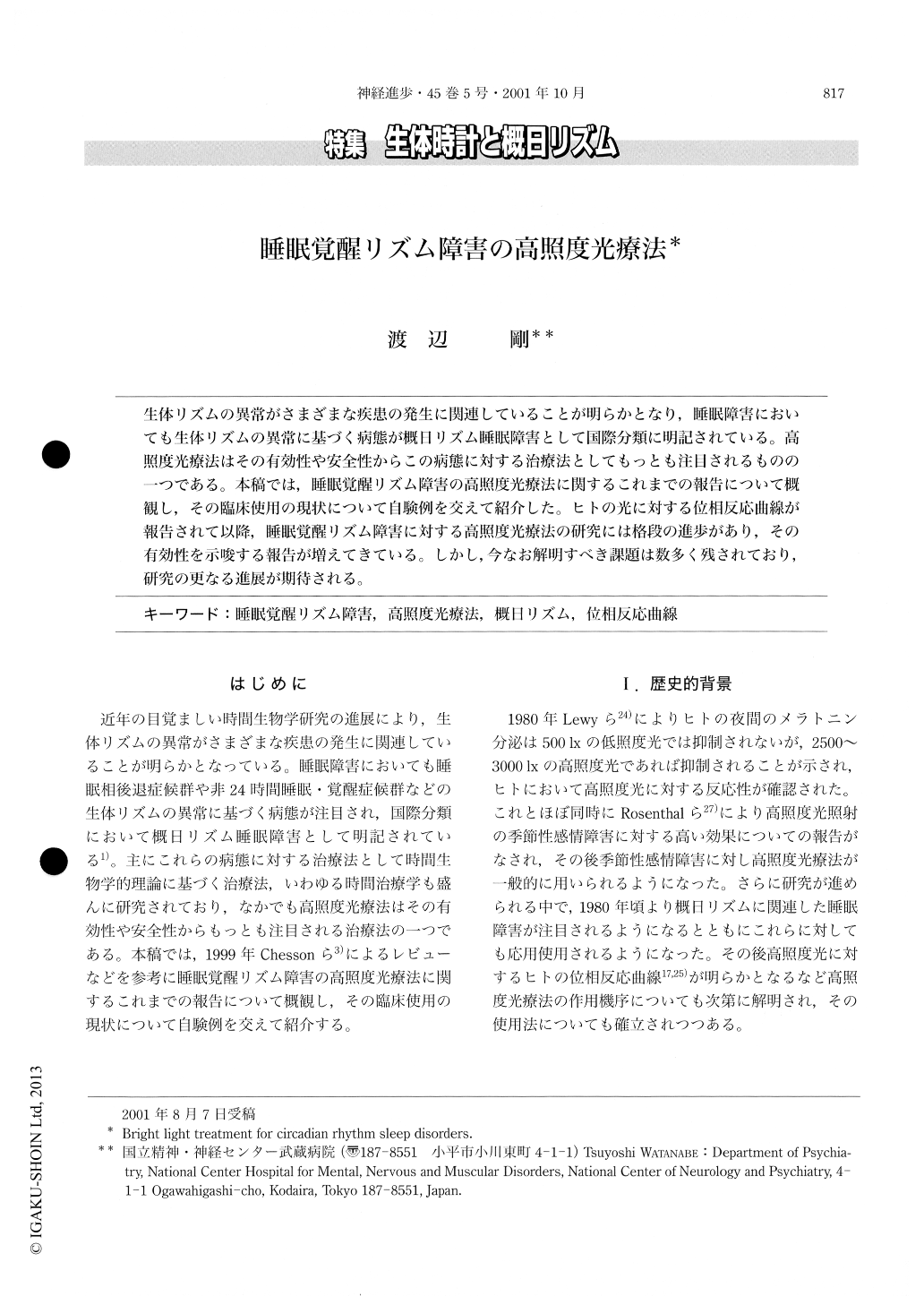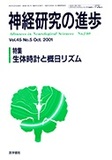Japanese
English
- 有料閲覧
- Abstract 文献概要
- 1ページ目 Look Inside
生体リズムの異常がさまざまな疾患の発生に関連していることが明らかとなり,睡眠障害においても生体リズムの異常に基づく病態が概日リズム睡眠障害として国際分類に明記されている。高照度光療法はその有効性や安全性からこの病態に対する治療法としてもっとも注目されるものの一つである。本稿では,睡眠覚醒リズム障害の高照度光療法に関するこれまでの報告について概観し,その臨床使用の現状について自験例を交えて紹介した。ヒトの光に対する位相反応曲線が報告されて以降,睡眠覚醒リズム障害に対する高照度光療法の研究には格段の進歩があり,その有効性を示唆する報告が増えてきている。しかし,今なお解明すべき課題は数多く残されており,研究の更なる進展が期待される。
Reports have clarified that some disorders are linked to disturbances in biological rhythms. It is now recognized that a number of sleep disorders are caused by disturbances in endogenous circadian rhythms, and these disorders are described in the International Classification of Sleep Disorders (ICSD) as circadian rhythm sleep disorders. The principle papers concerning the use of bright light as treatment for circadian rhythm sleep disorders, i. e., jet lag syndrome, shift work sleep disorder, delayed sleep phase syndrome (DSPS) , advanced sleep phase syndrome (ASPS) and non-24-hour sleep-wake syndrome (non-24), are reviewed herein. Our clinical studies on DSPS and non-24 are included.
At present, bright light is a popular treatment for circadian rhythm sleep disorders due to its effectiveness and safety. According to the phase response curve (PRC) for light, correctly timed bright light can both phase advance and phase delay circadian rhythms in humans. Since bright light applied during a suitable period after the time of minimum core body temperature will advance the internal clock, patients with DSPS are usually exposed bright light in the morning. Generally, this is artificial light of 2500 to 3000 lux.
Bright light can be useful in the treatment of DSPS and ASPS if it is used in accordance with the PRC. In our DSPS patients, sleep phase and body temperature rhythm were advanced, and sleep structure and the phase rela-tionship between sleep phase and body temperature were improved by bright light treatment. In another DSPS study, bright light treatment was effective even in the short term for advancing delays in the sleep phase and the time of minimum body temperature in our patients. For the other circadian rhythm sleep disorders, the results of past studies on bright light treatment have not been consistent, and the benefits of treatment are less clear. The numbers of field studies on the use of bright light treatment for jet lag syndrome and non-24 are particularly small. This report describes our non-24 patients whose free-running sleep-wake and body temperature rhythms were fitted to the environmental 24-h rhythm and whose sleep structures were improved by treatment with bright light.
Since PRCs were discovered, great progress has been made in understanding circadian rhythm sleep disorders and in the application of bright light for treatment. However, much remains to be clarified; e. g., the minimal and optimal times for bright light exposure in patients with circadian rhythm sleep disorders are unknown. We expect that further research into bright light treatment for these disorders will lead to determining optimal light therapy regiments for the various circadian rhythm sleep disorders.

Copyright © 2001, Igaku-Shoin Ltd. All rights reserved.


